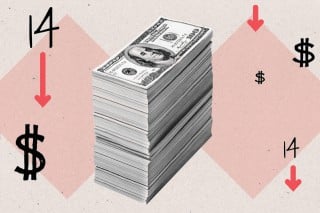advertisement

Americans built up quite a nest egg during the pandemic—but at the current rate of spending, it would be gone in 14 months, according to one estimate.
That’s what economists at Wells Fargo Securities calculated when they crunched the numbers on how much extra cash U.S. households had put away during the pandemic, and how fast we’re spending it down because of inflation.
The pandemic’s odd financial circumstances allowed many households to sock away money for a rainy day. No one is sure exactly how much, but Wells Fargo economists figure that as of September 2022, we had $1.2 trillion in excess savings due to the pandemic, that is, savings beyond what we would have put away in normal times.
Government pandemic relief programs such as stimulus checks, a good job market, and a lack of activities to spend money on during the early days of the pandemic have all helped people stockpile cash. However, people are spending down that massive reserve by $88 billion on average every month, judging by data from the Department of Commerce.
That “extra” cash is serving as a cushion against inflation, allowing people to continue spending despite rapidly rising prices for most things people buy. That’s complicating the Federal Reserve’s efforts to clamp down on inflation by raising interest rates in order to discourage spending and give supply and demand a chance to rebalance.
Have a question, comment, or story to share? You can reach Diccon at [email protected].